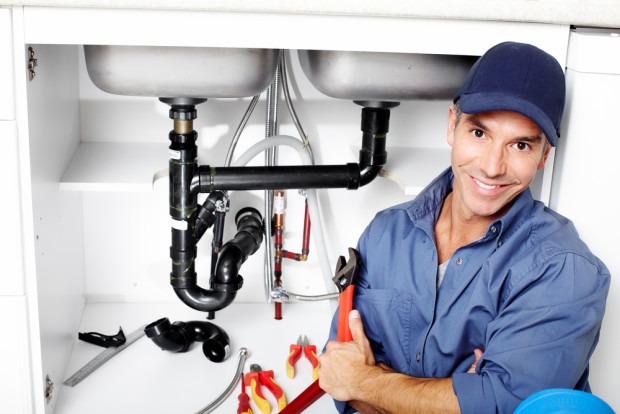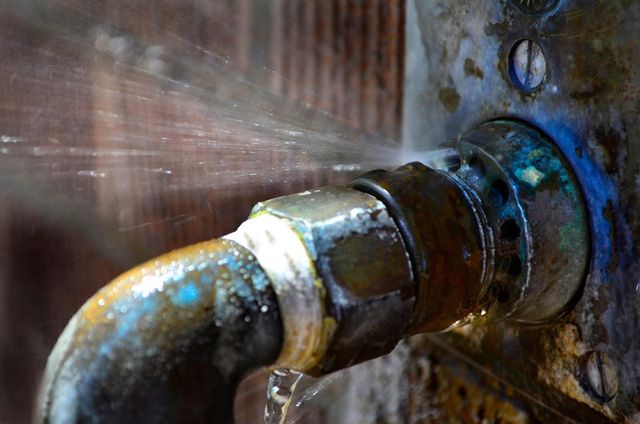Hiring the Pros: Common Appliance Issues Best Entrusted To Plumbers
Hiring the Pros: Common Appliance Issues Best Entrusted To Plumbers
Blog Article
Just how do you actually feel when it comes to Why Do My Plumbing Pipes Make A Knocking Noise?

To identify noisy plumbing, it is necessary to establish first whether the unwanted noises take place on the system's inlet side-in other words, when water is turned on-or on the drainpipe side. Sounds on the inlet side have actually varied causes: extreme water stress, worn valve as well as tap components, improperly connected pumps or other devices, inaccurately placed pipeline bolts, and also plumbing runs containing too many tight bends or other limitations. Sounds on the drainpipe side usually originate from poor location or, just like some inlet side sound, a layout consisting of limited bends.
Hissing
Hissing sound that takes place when a faucet is opened slightly generally signals extreme water stress. Consult your regional public utility if you presume this trouble; it will certainly have the ability to inform you the water stress in your location and also can mount a pressurereducing valve on the inbound water system pipeline if required.
Thudding
Thudding noise, typically accompanied by trembling pipelines, when a faucet or appliance shutoff is switched off is a problem called water hammer. The sound and also resonance are brought on by the resounding wave of stress in the water, which instantly has no area to go. Often opening a valve that releases water promptly right into an area of piping consisting of a limitation, elbow joint, or tee fitting can produce the same problem.
Water hammer can generally be healed by setting up fittings called air chambers or shock absorbers in the plumbing to which the trouble valves or taps are linked. These tools allow the shock wave developed by the halted flow of water to dissipate in the air they include, which (unlike water) is compressible.
Older plumbing systems may have short vertical areas of capped pipe behind wall surfaces on tap runs for the exact same objective; these can eventually full of water, lowering or destroying their efficiency. The treatment is to drain the water system entirely by shutting off the main supply of water shutoff and opening all taps. After that open up the major supply valve and also close the taps one by one, starting with the tap nearest the shutoff and also ending with the one farthest away.
Babbling or Screeching
Intense chattering or shrieking that happens when a valve or tap is activated, and that typically disappears when the installation is opened completely, signals loose or defective interior parts. The solution is to replace the shutoff or tap with a brand-new one.
Pumps and also home appliances such as cleaning makers as well as dishwashing machines can transfer electric motor sound to pipes if they are improperly linked. Link such things to plumbing with plastic or rubber hoses-never inflexible pipe-to isolate them.
Other Inlet Side Noises
Squeaking, squealing, damaging, snapping, as well as touching usually are triggered by the development or tightening of pipes, typically copper ones providing warm water. The audios occur as the pipes slide against loosened fasteners or strike neighboring home framing. You can commonly pinpoint the place of the problem if the pipes are exposed; just comply with the audio when the pipelines are making noise. More than likely you will certainly uncover a loose pipeline wall mount or an area where pipelines exist so close to flooring joists or other mounting items that they clatter against them. Connecting foam pipeline insulation around the pipes at the point of call ought to treat the issue. Be sure bands as well as hangers are safe and secure as well as supply ample support. Where feasible, pipeline fasteners need to be connected to massive structural elements such as structure walls instead of to mounting; doing so reduces the transmission of vibrations from plumbing to surface areas that can magnify and also transfer them. If affixing bolts to framework is unavoidable, cover pipes with insulation or various other durable material where they speak to fasteners, and also sandwich the ends of brand-new bolts between rubber washers when mounting them.
Correcting plumbing runs that experience flow-restricting tight or countless bends is a last resource that must be carried out only after getting in touch with a knowledgeable plumbing specialist. Unfortunately, this scenario is fairly usual in older homes that may not have actually been developed with interior plumbing or that have actually seen numerous remodels, especially by novices.
Drainpipe Noise
On the drainpipe side of plumbing, the chief objectives are to eliminate surface areas that can be struck by dropping or rushing water as well as to insulate pipes to have unavoidable noises.
In brand-new construction, tubs, shower stalls, toilets, and wallmounted sinks and also containers should be set on or versus resistant underlayments to decrease the transmission of noise via them. Water-saving toilets as well as taps are much less noisy than traditional versions; install them rather than older kinds even if codes in your location still permit making use of older components.
Drainpipes that do not run vertically to the cellar or that branch right into horizontal pipe runs supported at flooring joists or various other framing existing particularly bothersome sound problems. Such pipes are big sufficient to emit substantial vibration; they also bring considerable amounts of water, which makes the circumstance even worse. In brand-new building and construction, define cast-iron soil pipes (the large pipes that drain bathrooms) if you can manage them. Their enormity has a lot of the noise made by water travelling through them. Additionally, stay clear of routing drainpipes in walls shown bed rooms as well as spaces where individuals collect. Wall surfaces consisting of drains ought to be soundproofed as was defined previously, making use of dual panels of sound-insulating fiber board as well as wallboard. Pipes themselves can be wrapped with special fiberglass insulation produced the function; such pipes have an impervious vinyl skin (occasionally consisting of lead). Results are not always acceptable.
If Your Plumbing is Making These Sounds, There’s a Problem
A Bang or Thump When You Turn Off a Faucet
If a loud bang or thump greets you each time your turn off running water, you likely have a water hammer. A water hammer occurs when the water velocity is brought to a halt, sending a shock wave through the pipe. It can be pretty jarring — even worse, damaging to your plumbing system. All that thudding could loosen connections.
Strange Toilet Noises
You’re so familiar with the sounds your toilet makes that your ears will be attuned to anything out of the ordinary. Fortunately, most unusual toilet noises can be narrowed down to just one of several problems.
Foghorn sound:
Open the toilet tank Flush the toilet When you hear the foghorn noise, lift the float to the top of the tank If you’re ambitious, you can remove the ballcock valve and disassemble it to replace the washer. Or you can more easily replace the ballcock valve entirely. This device is relatively inexpensive and available at most any hardware store.
Persistent hissing:
The hissing following a flush is the sound of the tank filling. It should stop once the tank is full. But if the hissing continues, it’s likely because water is leaking out of the tank. The rubber flap at the bottom of the tank can degrade, letting water slip through and into the bowl. That’s why the tank is refilling continuously. Fortunately, this is an easy fix:
Cut the water to the toilet by closing the shutoff valve on the water supply line. Flush the toilet to drain the tank. Disconnect the flapper Attach the new flapper Gurgling or bubbling:
Gurgling or bubbling suggests negative air pressure in the drain line, likely resulting from a clog. As air releases, it causes the water in the toilet to bubble. This could either be a minor issue or a major one, depending on the clog’s severity. Clogs can be caused by toilet paper or more stubborn obstructions such as tree roots. If you can’t work out the clog with a plunger, contact a professional plumber for assistance because a clog of this magnitude could lead to filthy and unsanitary sewage backups in your sink bathtub.

Do you really like reading up on How To Fix Noisy Pipes? Make a remark directly below. We would be delighted to listen to your feelings about this article. In hopes that you come back again in the future. Are you aware of anybody else who is intrigued by the subject? Feel free to share it. Many thanks for your time. Please pay a visit to our website back soon.
Visit Website Report this page